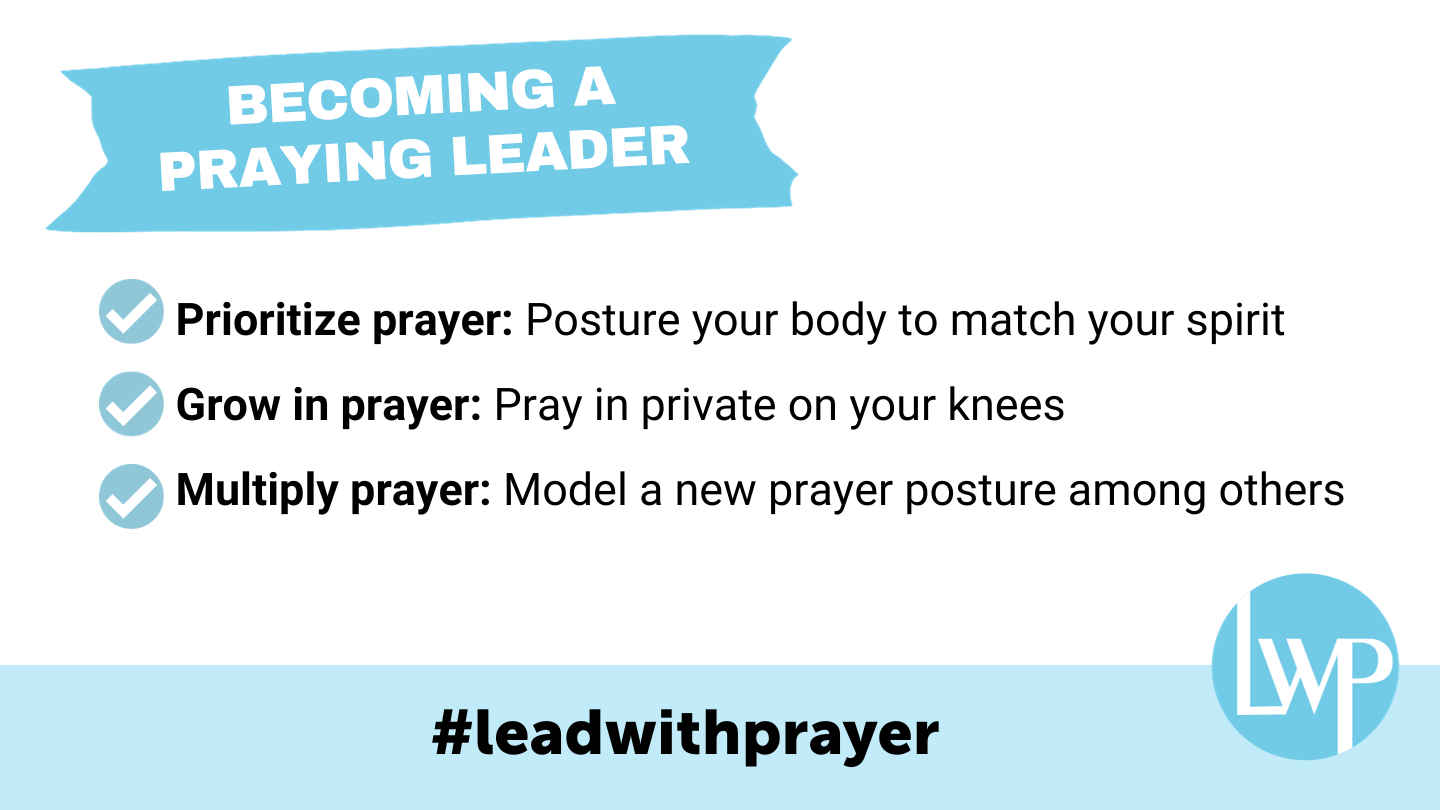Lead With Prayer: Cultivate Personal and Organizational Prayer HabitsÀpẹrẹ

Creating Humble Hearts
Does posture matter when it comes to prayer?
There’s no biblical prescription for or prohibition against a particular prayer posture. There’s no spiritual superpower in folding our hands, bowing our heads, or dropping to our knees—yet, in a sense, our posture matters very much.
Jewish leaders in biblical times typically opened their arms and swayed back and forth in prayer, but the apostle Paul went to his knees as he prayed for the people and churches he oversaw (Ephesians 3:14). Daniel and David, too, prayed on their knees (Daniel 6:10, Psalm 95:6), as did Jesus when He poured His heart out to God in prayer in the Garden of Gethsemane (Luke 22:41).
While there are different and equally valid physical postures for prayer, our heart posture matters enormously. From biblical leaders, we see that our physical posture can reinforce a spiritual perspective. These people of prayer—and others throughout Scripture—broke with tradition by kneeling to evidence their humility and submission to God. Taking a physical posture of kneeling can help our hearts learn to yield before God, waiting in humble dependence on Him. When we come before God in prayer, we seek to have a “kneeling heart.”
E. M. Bounds, a late-nineteenth-century pastor, summarized, “Where there is earnest and faithful praying the body always takes on the form most suited to the state of the soul at the time. The body, that far, joins the soul in praying.”
We may lift our hands in praise or lie prostrate in desperation. We may turn our open hands downward to symbolically release heavy weights we were never intended to carry (anxiety, guilt, anger, pain, etc.) and then upward to receive the good gifts of God (peace, love, grace, forgiveness, etc.). We may raise our eyes heavenward as we fix our attention on God, humbly acknowledging that He is above us and sovereign over us.
Many of us are prone to self-reliance and allured by the illusion of control, but when we humbly recognize our need for God, we find healing, wholeness, strength, courage, and wisdom in His presence. Humility is an essential motivator of prayer, but it’s also true that a strong prayer life reinforces the virtue of humility. Let us strive to cultivate hearts of humility, constantly coming before God with kneeling hearts.
____________
Application:
To prioritize prayer: Try posturing your body to match the spirit of your prayer.
To grow in prayer: Start your private prayer times on your knees.
To multiply prayer: Whether in front of your family, team, or church community, openly break tradition and model a physical posture that aligns with your heart posture in prayer.

Nípa Ìpèsè yìí

Jesus proved that prayer and leadership belong together. While many Christian leaders struggle with lackluster prayer lives, others have discovered an intentional prayer life is the nonnegotiable constant of lasting, fruitful Christian life and leadership. In this devotional, we explore the spiritual habits, rhythms, and prayer practices of world-changing leaders to help you cultivate personal and organizational commitments to prayer.
More









